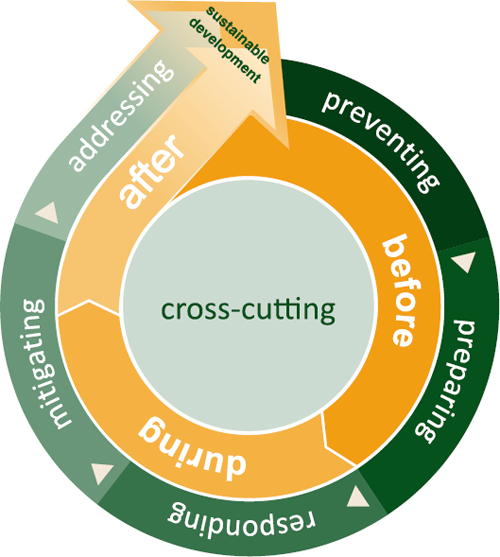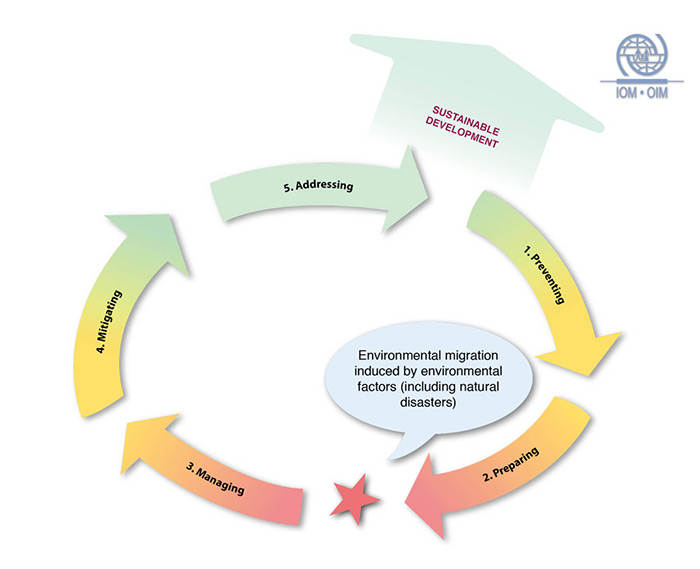Introduction
Disasters are one of the biggest challenges facing human population across the world. Therefore, this has motivated various stakeholders to come up with various strategies for reducing the risk and impact of disasters. Disaster risk reduction exists in various approaches, according to the urgency and nature of the disaster itself. The severity of the disaster also determines the strategy to be employed. This paper takes the approach that DRR is the only way of minimizing the impact and risks of disasters and therefore should be adopted.
What is Disaster Risk Reduction?
Disaster Risk Reduction (DRR) refers to an orderly approach of identifying, reducing, and assessing the risks of a disaster. Its main aim is to minimize socioeconomic, environmental, or any other vulnerabilities and hazards that might trigger a disaster (McEntire, 2000). Its development has been influenced by various researchers who have focused on disaster vulnerability since the 1970s. Due to its effectiveness, development and aid agencies should fully adopt it. Actually, it should be highly integrated into the activities of these organizations to guarantee that adequate disaster management measures are taken. DRR exists in varying intensity or forms. As noted by UNISDR (2004) it is deeper and broader than conventional emergency management approaches. It should therefore be included in all sectors of development and public works. It is worth noting that its principles are fully aligned with the principles of Disaster Risk Management (DRM).
It is the evolution of DRM that led precisely to a deeper understanding of how disasters usually occur. This has consequently enabled the adoption of integrated and holistic methods of minimizing the risk of disasters and associated impact (UNISDR, 2004). Disaster Risk Reduction (DRR) is the most recent approach to disaster management. It incorporates new DRM thinking and practices. Nevertheless, it still embraces earlier principles and practices of disaster management that have proven to be effective (McEntire, 2000).
Application around the Globe
Around the globe, an example of a country that has applied DRR is Bangladesh. Bangladesh has traditionally been prone to natural disasters as portrayed evidently by the fact that it experienced 219 natural disasters having caused damages worth 16 billion USD between 1980 and 2008. The ongoing climate change is likely to aggravate the situation further (Wisner, Blaikie, Cannon and Davis 2004). Encouragingly, for quite some time UNDP has played an instrumental role in enabling Bangladesh to address its disaster vulnerabilities. Such support has enabled the country to shift from adopting reactive disaster management approaches to adopting more proactive ones (UNISDR, 2004).
The results of this shift have been obvious, especially to those people affected by these natural disasters. The effort of Bangladesh to combat disaster has made it a leader in the field of disaster risk management; other countries emulate it to improve their DRM (UNISDR, 2004). The 1980s floods were the first natural disaster that compelled Bangladesh to adopt a flood action plan. The action plan was clearly a proactive DRR initiative considering actions other than managing the current disaster, it aimed to develop a culture that supported the best disaster management and risk reduction practices.
International Disaster Risk Reduction Strategies
Presently, there exist several highly regarded international disaster risk reduction programs. A good example is the World Disasters Reduction Campaign. This initiative addresses those risks facing the most vulnerable people. Particularly, it considered schools as the most vulnerable areas and for this reason focuses on them. In addition, focusing on schools allows it to align its initiative with Priority three of the functional Hyogo Framework for Action (UNISDR, 2004).
Similarly, schools are considered as the best venues for forging durable collective values. They are therefore suitable for building a lasting culture of disaster prevention and resilience. The World Disaster Reduction Campaign does so by first emphasizing for DRR to be included in school curriculum or incorporated in other school activities. The Campaign also ensures that school buildings are safe. During its first year of operation, the campaign undertook various projects that represented the true spirit of the theme of the Campaign and that of the International Day for Disaster Reduction (IDDR) (UNISDR, 2004).

One Million Safe Hospitals initiative is another example of an international DRR strategy. It encourages the Government, businesses, and members of the public to abide the pledge of keeping hospitals safe and free of all avoidable disasters. This implies that it also places greater emphasis on effective disaster risk response so as to minimize the effects of the unavoidable disasters. Keeping hospitals safe is critical considering these institutions play a critical role in responding to disasters. The impact of a disaster can be magnified if hospitals are severely affected to a point they cannot treat victims of the disaster. Important to note is that this program also focuses on school safety (UNISDR, 2004).
The “Making Cities Resilient” campaign is also another strategy. It addresses disaster issues that face local governance and urban centers. The campaign utilizes knowledge acquired from past campaigns focusing on schools and hospitals, as well as the principles of urbanizations set during the 2009-2013 UN-Habitat World Urban Campaign (UNISDR, 2004). With the support and recommendation from partners and other interested stakeholders, the “Making Cities Resilient” campaign is expected to progress into the future, thus lessening the risks and effects of the disasters (UNISDR, 2004).
Recommendation for Policy Makers
It is recommended for policy makers to apply a combination of public responsibility and advocacy work to develop optimal disaster management policies. On one hand, public commitment ensures that the civilians living in risk prone regions are always alert. This will ensure they are not caught unawares by the unpredicted disaster. Even when such a disaster occurs, a proper method of responding will be introduced to minimize the negative impact (Mitchell and Wilkinson 2012). On the other hand, advocacy work will go a long way in ensuring the public gains all information related to the disaster and risks, as well as their management. They can therefore easily collaborate with relevant authorities who are in charge of implementing disaster management policies (Shaw, Pulhin & Pereira 2010).
Personal Opinions
Education is the most appropriate or efficient approach of disaster risk reduction. For example, whenever a campaign regarding DRR is in the offing, it will be effective as the public already has all the information about the risks. An example of the country where education was effective is Bangladesh. The government together with international partners embarked on a process of educating the public about DRR.

The initiative resulted in reducing risks of a disaster, which was always on the rise (Wisner et al. 2004). This is definitely a clear indication that education is an efficient disaster risk reduction strategy. However, it should be noted that mild or informal education is the most effective of all DRR strategies (Mitchell and Wilkinson, 2012).
Conclusion
Disaster reduction campaigns are the only way that is going to ensure the reduction of risks whenever a disaster occurs. All the available resources should be channeled towards education with the potential of raising disaster awareness. In the end, the world will be free from losses that result from disasters. This is because disasters cannot be avoided, but can be controlled.
References
McEntire, A., (2000). Sustainability or invulnerable development? Proposals for the Current shift in paradigms. Australian Journal of Emergency Management, 15(1), 58-61.
Mitchell, T., and Wilkinson, E. (2012). Disaster risks management in post-2015 policy frameworks: forging a more resilient future. Overseas Development Institute Briefing Paper. Web.
Shaw, R., Pulhin, J. M., & Pereira, J. J. (2010). Climate Change Adaptation and Disaster Risk Reduction: Issues and Challenges. Wagon Lane: Bingley.
UNISDR. (2004). Living With Risk: A Global Review of Disaster Reduction Initiatives; pg. 17-23. Web.
Wisner, B., Blaikie, P., Cannon, T., and Davis, I. (2004). At Risk: Natural hazards, people’s vulnerability and disasters. London: Routledge.